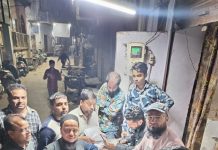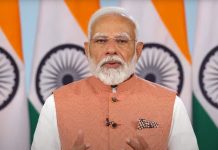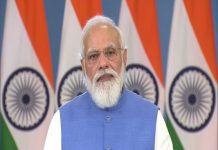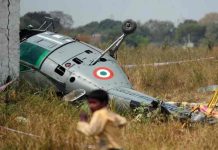 Eight years ago, the beautiful Kathak dancer and Guru, Rani Karnaa, rang me from Kolkata which had been her home since 1978 and asked me to interview her for her “documentation” for the Sangeet Natak Akademi. A “documentation” is a long and detailed interview and recordings of the artistic work done over a lifetime. I felt privileged that she had chosen me for this archival recording.
Eight years ago, the beautiful Kathak dancer and Guru, Rani Karnaa, rang me from Kolkata which had been her home since 1978 and asked me to interview her for her “documentation” for the Sangeet Natak Akademi. A “documentation” is a long and detailed interview and recordings of the artistic work done over a lifetime. I felt privileged that she had chosen me for this archival recording.
She had at that time injured her leg and didn’t want to be rushed around. She asked if she could stay with me which would allow us to prepare better for the interview. This turned out to be a God sent opportunity to learn more about her personal history, the person she was and about the many wonderful people who were the wind beneath her wings. We visited one of them, Dr SK Saxena, a great scholar of the form, for whom she was the muse around whose dance he had considered many questions that he addressed in his landmark book, “Swinging Syllables: Aesthetics of Kathak Dance”.
Rani was born to an aristocratic family that hailed from Larcana. In 1942, barely three years old, Rani accompanied the family when her father, Assandass Karnaa relocated to Delhi. The original family name was Karnamalani, which was first abbreviated to Kanaani and then to Karnaa. Rani’s spelling of her name with a double ‘a’ did not have anything to do with numerology!
Here the little girl was fascinated with the sound of the dancer’s bells and so small ghunghroos (musical anklet)were bought for her from the market. This was only the first step as she next insisted on joining dance classes, and from Sangeet Bharati where Birju Maharaj’s father, Acchan Maharaj had taught Kapila Vatsyayan, Rani Karnaa commenced her training under the tutelage of Jaipur Gharana’s senior Guru, Mohanlal ji. Rani Karnaa had found her calling.
Later Rani was to learn from other Kathak maestros including Nrityacharya Narayan Prasad, and Pts. Hiralal and Sundar Prasad, in the Jaipur gharana, and under Pt. Birju Maharaj she learnt the finesse of the Lucknow gharana. “There was not so much division between the gharanas at that time. Sundar Prasad ji had learnt himself from both gharanas”, Rani ji had added, on seeing my surprised look, given the fact that we know gharana rivalries to be rather strong.
Actually, she began her training in dance when there was a new energy of a young nation and everyone was united in their efforts “to take their art to the level of the ‘falak’”. Somehow I was not surprised to hear her use this Arabic etymology word, which means ‘heaven’, in her otherwise impeccable sentence in English. That is how she was- multilingual, multicultural, embracive and open minded.
Though even at an early age, in the spirit that represented the discovery of India, Rani learnt other dance forms, including Manipuri, which she learnt from the legendary Guru Amubi Singh, and Bharata Natyam, which she learnt from Kalakshetra trained Delhi based guru Lalitha Shastri, it was Kathak that was her life. “From Pt. Narayan Prasad ji I learnt the correct ‘ang’ body lines, and from Pt. Sundar Prasad ji I learnt a vast repertoire”.
She recalled that just before he passed away, Naraya Prasad ji had started telling her about Chatushpadis on Krishna, particularly, he described his beauty in such a dazzling way that even cupid was amazed- ‘Hey, lajat Anang…’.As the Guru died before he could teach her this composition, she went to the patriarch of the dagar Baani, Rahimuddin Dagar, who composed it for her in four different ragas, and that is how she was not only able to include it in her repertoire but also display “how the ‘purana tareeka’ ( the old way) was taken forward”.
Few people know that she was one of the first winners of the gold medal at the Shankar’s Children’s Dance Competition, initiated by India’s then leading cartoonists, Keshava Shankara Pillai, who had started a children’s magazine, Children’s World and the Dolls museum, apart from the International Children’s Competitions, one of which was the Dance Competition. The training in dance and the winning of laurels in dance, happened along with her studies, first in school and then in college. She pursued her graduation in Botany from Hindu College. She enrolled for her masters in Kirorimal College but had to give up her academic life to pursue her passion for dance.
Soon after the Shankar Gold medal, the “big deal” in her life was when “Bharatiya Kala Kendra invited a young Birju Maharaj to create dance dramas and I was invited to join the ensemble” remembered Rani Karnaa with eyes that sparkled. The experience of working with the young Birju Maharaj began to mature her creative mind, but her “Jigyasu mind” — the curious mind, as she called it, needed the intellectual guidance of Dr SK Saxena.
“The year 1955, 1956 and 1957, while I was in college, I was selected to participate in the Inter-University Youth Festival, representing Delhi University. In 1955, I was in Hindu College and the programme was conducted by Birju Maharaj. I was awarded the first prize.” In 1956 and 1957, Rani was selected consecutively from Kirorimal College, as she continued to represent Delhi University. The recital was conducted by the late Pandit Narayan Prasadji of Jaipur gharana while Delhi University’s Professor of Philosophy, Dr SK Saxena, took a deep interest in the preparation. “The rehearsals used to take place at Dr Saxena’s residence under his supervision” recalled Rani ji in a subsequent interview when I was at the Inter-University Youth Festivals.
“Guruji was so enthusiastic that he composed a special piece for me, the scintillating ‘Rangmanch pravesh’, wherein I entered the stage spinning continuously”, an entry that earned Rani thunderous applause. “These chakkars were very difficult as they were executed on the toes, giving an impression of floating in the air. We would begin practising for it many months in advance, as first there were college- level selections followed by the inter-University competition. There used to be rigorous rehearsals in summer on the terrace, with scant concern for the blisters on my feet.”
Dr. Saxena was a friend, philosopher and guide to her. He advised her, chose, selected and pointed out details regarding presentation. I have been witness to the intellectual closeness between Saxena and Rani Karnaa. When she felt that Kathak had inadequate representation on Shiva, Saxena helped her add to the repertoire by finding appropriate poetry, including penning some afresh.
Fellow dancers, who met Rani Karnaa at the Inter-University Youth Festivals, like senior Kathak Guru Bandana Sen, testify to her generous and nature non-competitive. She interviewed Sen for her college magazine and shared a Ganesh Kavitt with Pune based dancer Prabha Marathe.
It was in her second year of participation that Rani Karna saw Priyambada Mohanty perform what later came to be named Odissi. “Priyambada Mohanty’s bhangimas, …her posture in dhanur asana was just stunning, very sculpturesque. It was an imprint on my mind for a long time. Much later, after I was married into an Odia family, I went on to learn the form.”
Rani Karna was trained in Odissi by Guru Kelucharan Mahapatra and for long danced both styles. She even participated in the Pradakshina Festival, organised in July 2001, to felicitate Guru Kelucharan Mahapatra on his 75th birthday, a few years after which he passed away.
In 1973, she had moved to Kolkata from Delhi, following her husband, a Government of India bureaucrat, whom she had married in 1963. This city was to be her home until the end of her days.
In 1978, she was invited, by the eminent Sitarist Jaya Biswas to join the Indian Music section of the Calcutta School of Music, as a teacher of the Kathak dance, a position in which she stayed till 1993. Ahana, the Centre of Art and Culture, the music and dance wing of Kolkata’s Aurobindo Bhavan, owes much to Rani Karnaa, who founded and headed the dance department.
Rani Karnaa performed till 2008, after which her health deteriorated. Since then she concentrated on teaching. Her relationship with her students was warm and open-hearted, and she was genuinely respected and deeply loved by them.
The secret to being a good teacher she felt was by “giving them longitudes and latitudes”. Her disciples like Sohini Debnath, Debashree Bhattacharjee and Vikram Iyengar will undoubtedly keep her faith in them, and the lamp she handed over to them, lit with a glowing flame.
letters@tehelka.com













